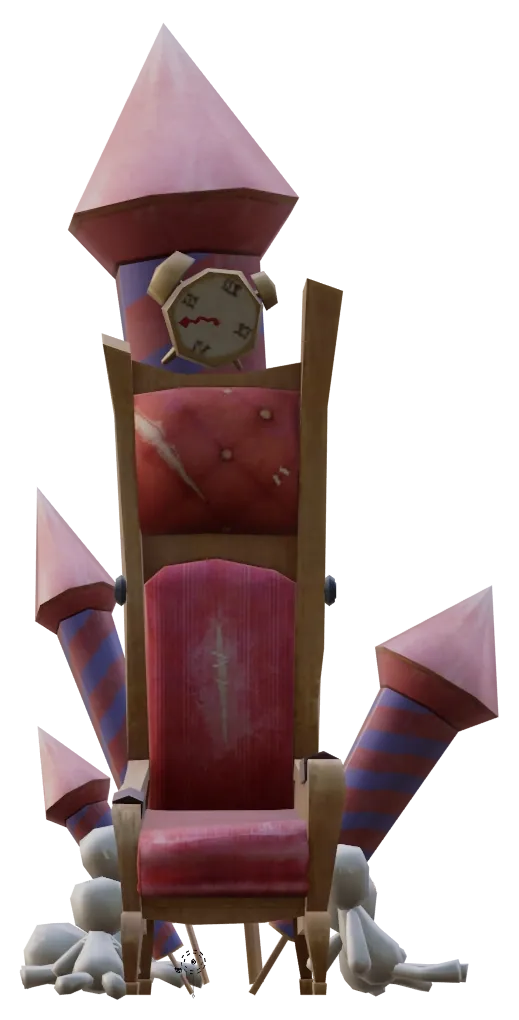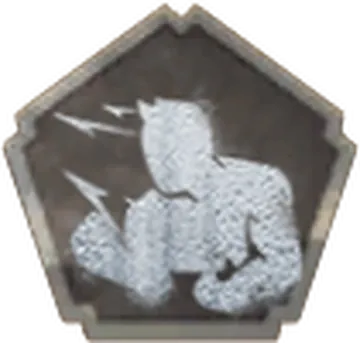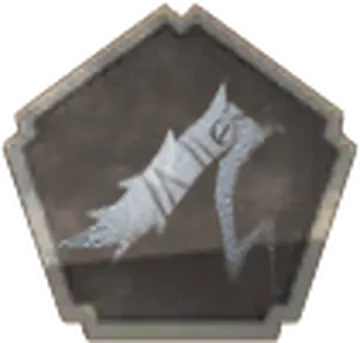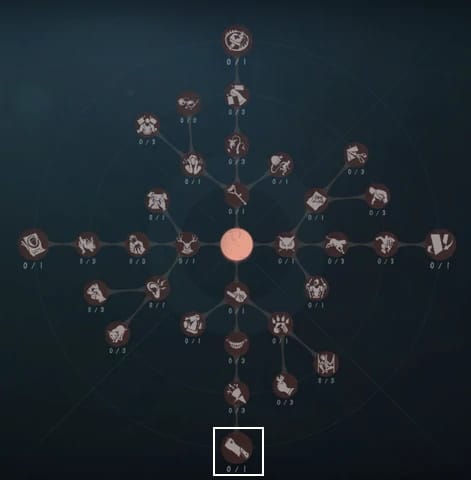Identity V Best Hunters 2025: Top 5 Beginner Guide
Buffget
2025/11/04
Master Identity V hunting with our comprehensive 2025 guide featuring the 5 most beginner-friendly hunters. Learn essential mechanics, optimal builds, and proven strategies to dominate matches as Hell Ember, Smiley Face, and Gamekeeper while avoiding common rookie mistakes.
Getting Your Bearings: Hunter Basics That Actually Matter
What You're Really Signing Up For
Look, hunting in Identity V isn't just about running around swinging weapons—though there's definitely some of that. You've got three core jobs: patrol the map, chase down survivors, and secure eliminations through those ominous Rocket Chairs. Simple enough, right?
Here's the thing though. You need to eliminate 3 out of 4 survivors before time runs out, and trust me, those survivors aren't going to make it easy for you. Sure, you're faster than them, but they vault windows quicker than you do. It's this constant push-and-pull that makes hunting both frustrating and addictive.
The elimination dance goes like this: hit survivors twice (or once if you catch them off-guard with a Terror Shock), carry their downed body to a Rocket Chair, then watch that 60-second countdown tick away. Those chair stages matter more than you'd think—0-49% gives you 30 seconds, 50-99% another 30 seconds, then boom—elimination at 100%. And here's a nasty surprise for survivors: if they hit over 50% on their first chair, they start at 50% on any subsequent chairs. Brutal, but fair.

The Mechanics That'll Make or Break You
The Presence system is your lifeline—it unlocks enhanced abilities as matches progress. Every successful attack feeds into this system, which is why hunters like Smiley Face benefit massively from the Insolence trait (it gives passive Presence gain, basically free power-ups).
That blue ear icon? That's Tinnitus, and it's your best friend. It reveals survivor footprints, sounds, and environmental disturbances. New players often ignore this completely—don't be one of them.
Once that final cipher pops, everything changes. You get Detention for 120 seconds (double damage, absolutely devastating), while survivors scramble to power two Exit Gates that take 18 seconds each. Hunters with teleport abilities absolutely dominate this phase, though area denial hunters can lock down exit routes just as effectively.
Quick note from the editor: If you're serious about mastering different hunters quickly, Identity V cheap top up through buffget offers excellent value with competitive pricing and instant delivery. No waiting around to unlock the hunter you want to practice with.
The Big Five: Your Gateway to Hunter Mastery
Hell Ember - Where Every Hunter Should Start
Leo Beck gets a bad rap with his D Tier ranking (5/35 points), but honestly? That's missing the point entirely. This guy's your training wheels, and I mean that in the best possible way.
His Difficulty Level 1.5 rating exists for a reason—the puppet system teaches map control without drowning you in complexity. Yeah, he's slow. Yeah, experienced survivors will run circles around you initially. But that's exactly why he's perfect for beginners.
His sluggish speed forces you to think strategically about every chase. Should you commit to this survivor, or rotate to someone else? Where should you position yourself for maximum map coverage? These are the questions that separate decent hunters from great ones, and Hell Ember makes you confront them from day one.
The puppet mechanics are straightforward enough that you can focus on developing game sense rather than wrestling with complicated ability rotations. Plus, that resurrection mechanic? It's basically a second chance to learn from your mistakes.
Smiley Face - Speed Demon Simplified
Joker takes the crown for accessibility with his Difficulty Level 1 rating, and honestly, it's well-deserved. The rocket dash mechanic is about as straightforward as Identity V gets—point, aim, fire.

What makes him brilliant for beginners is how the rocket dash teaches prediction and movement reading. You're essentially learning to think 1-2 seconds ahead of survivors, which is a skill that transfers to every other hunter in the game. The hitboxes are clean, the speed boost helps with map traversal, and when you start landing those dashes consistently? The snowball effect is real.
Sure, he's stuck in D Tier (10/35 points), but that ranking doesn't account for his educational value. Obstacle-heavy maps will humble you quickly, but that's actually a good thing—you'll learn when to abandon hopeless chases and find easier targets.
Gamekeeper - Control Without Complexity
Bane Perez sits comfortably at Difficulty Level 2, and his C Tier ranking (16/35 points) reflects genuine viability rather than just beginner-friendliness. The chain hook system is intuitive—see survivor, throw hook, profit.

What I love about Gamekeeper for new players is how forgiving he is. Miss a hook? No big deal, you've still created area denial. Land a hook during a rescue attempt? Suddenly you've turned a potential loss into a massive advantage.
The trap placement teaches strategic thinking without requiring frame-perfect timing. You're learning to think several moves ahead—where will survivors go? What routes do they prefer? How can I cut off their options? These are advanced concepts wrapped in accessible mechanics.
Hell Ember Deep Dive: Your First Real Hunter
Making Puppets Work for You
The puppet system operates in three phases: summon, position, activate. Sounds simple, but the positioning is where most beginners stumble. Don't just drop puppets randomly—think about survivor movement patterns. Where do they run when panicked? What routes connect multiple cipher machines?
Deploy puppets during chases to cut off escape routes, or place them near chairs for camping assistance. The resurrection mechanic is your ace in the hole—even if you get eliminated, you're coming back with valuable intel about survivor positions and cipher progress.
Build Recommendations That Actually Work
Forget cookie-cutter builds for a moment. As a beginner, you want traits that compensate for Hell Ember's weaknesses while amplifying his strengths. Detention is non-negotiable—that endgame double damage can turn hopeless situations into victories.
Confined Space blocks vaulted windows for 20 seconds, essentially creating temporary dead zones. Combined with puppet placement, you can lock down entire map sections. Insolence addresses his early game weakness with passive Presence gain, getting you to enhanced puppets faster.
Trump Card deserves special mention here—it lets you swap traits mid-match, which is perfect for experimentation. Learning what works in different situations without committing to potentially terrible builds? Priceless.
Map Strategy: Location, Location, Location
Hell Ember shines on maps with natural chokepoints. Sacred Heart Hospital and Arms Factory become your playgrounds, while open maps like Lakeside Village will test your patience.
Focus on controlling central areas rather than chasing survivors to map edges—your speed disadvantage becomes pronounced in wide-open spaces. Position yourself to maintain central presence while using puppets to extend your control radius.
Cipher prioritization should focus on central generators that your puppets can cover. Don't overcommit to edge ciphers unless you're absolutely certain you can secure an elimination.
Smiley Face Mastery: Speed and Precision
Rocket Dash: More Than Point and Click
Here's what the tutorials don't tell you—rocket dash success depends entirely on reading survivor behavior. You're not aiming at where they are; you're aiming at where they'll be in 1-2 seconds.
The ability travels in straight lines with slight turning capability, making it devastating in corridors but tricky in open areas. Watch for animation locks—survivors vaulting windows or dropping pallets can't dodge mid-animation. That's your window.
Editor's note: If you're planning to practice extensively with different hunters, Identity V Echoes recharge online through buffget ensures you've got the resources to experiment without constraints. Their reliable service means no interruptions to your practice sessions.
Recovery mechanics let you cancel dashes and reposition when survivors juke your initial attempt. Learning when to cancel versus committing to the full distance? That's the difference between good Smiley Face players and great ones.
Target Selection: Work Smarter, Not Harder
Don't just chase the closest survivor—chase the most vulnerable one. Survivors near walls, in corridors, or committed to cipher interactions have limited escape options. Multiple escape routes? Strong kiting areas nearby? Find someone else.
Injured survivors only need one rocket dash hit for elimination, making them priority targets during team fights. This teaches threat assessment under pressure—a skill that transfers to every hunter in the game.
Avoiding the Rookie Traps
Overcommitting to difficult chases is the #1 Smiley Face mistake. That rocket dash cooldown creates vulnerability windows, and experienced survivors will exploit them ruthlessly. Learn to recognize unfavorable matchups and rotate to easier targets.
Predictable dash patterns are another killer. If you're always dashing immediately when the cooldown ends, survivors will read you like a book. Mix up your timing, fake out your intentions, keep them guessing.
Gamekeeper Fundamentals: Hooks and Strategy
Hook Timing: Patience Pays Off
Chain hook success isn't about reflexes—it's about patience and prediction. Wait for animation locks: vaulting windows, dropping pallets, rescue attempts. These create windows where survivors can't dodge effectively.
Lead your targets based on movement speed and direction. Moving survivors require aim adjustment, but the payoff is massive when you yank someone away from a safe position or interrupt a rescue entirely.
Map Control Through Area Denial
Trap placement should prioritize high-traffic areas: cipher clusters, rescue routes, chokepoints. Effective positioning creates passive pressure, forcing survivors into suboptimal pathing decisions.
Your hook threat alone can control large map areas without direct presence. Survivors know you can yank them from safety, so they'll take longer routes or hesitate at crucial moments. That hesitation? That's free pressure.
Reading Survivors Like a Book
Movement pattern recognition is a learnable skill. Watch how individual survivors behave—preferred escape routes, kiting styles, positioning habits. Some survivors panic under pressure and make predictable mistakes. Others stay calm and require different approaches.
Team coordination reading involves understanding when survivors attempt rescues, group healing, or coordinated cipher rushing. These patterns become predictable once you know what to look for.
Essential Builds That Won't Let You Down
Persona Trees for Real Situations
Detention remains the cornerstone for basic-attack hunters. That endgame double damage can salvage matches that seemed hopeless. Confined Space offers universal value—20 seconds of window blocking creates temporary dead zones that even experienced survivors struggle with.

Insolence provides passive Presence gain, which is crucial for early-game weak hunters. Instead of struggling through the first few minutes, you're building toward enhanced abilities automatically.
Equipment That Makes Sense
Trump Card allows mid-match trait swapping for tactical flexibility. Perfect for beginners who need to experiment without committing to potentially suboptimal builds for entire matches.
Peepers reveals hidden survivors in lockers and behind obstacles. It's not just about finding survivors—it's about developing tracking skills and map awareness that'll serve you well with every hunter.
Excitement counters stunning effects from Enchantress charms and Cowboy lassos. Nothing's more frustrating than landing a perfect ability only to get stunned mid-animation.
Building for Your Playstyle
Ignore recommended builds initially. They're generic solutions that might not suit your individual playstyle or hunter selection. Training mode provides risk-free environments for experimentation—use it liberally.
The 2025 meta continues evolving with weekly Thursday updates, so what works today might need adjustment tomorrow. Focus on understanding why certain traits work together rather than memorizing specific combinations.
Core Strategies Every Hunter Needs
Chasing: Mind Games Over Mechanics
Mind-gaming involves using behavioral cues and ability threats to manipulate survivor positioning without actually using abilities. Fake ability animations, unpredictable movement patterns, psychological pressure—these create survivor mistakes more reliably than perfect mechanical execution.
Loop cutting requires understanding map geometry and survivor escape options. Position yourself to minimize kiting potential rather than just following survivors around obstacles. Think three-dimensionally about movement and positioning.
Ability timing coordination with survivor animation locks maximizes hit probability while minimizing cooldown waste. Those guaranteed timing windows during vaults and pallet drops? That's free damage if you're patient enough to wait for them.
Cipher Control: The Real Objective
Patrol efficiency involves checking multiple cipher machines quickly while using Tinnitus to detect active decoding. Memorize machine locations and optimal patrol routes—this minimizes time investment while maximizing information gathering.
Pressure distribution requires balancing chase commitment with map presence. Extended chases might secure one elimination while survivors complete three cipher machines uncontested. That's a losing trade every time.
Priority targeting focuses on cipher machines that provide strategic advantages when defended—central locations, machines near important map features, generators that create chokepoints when controlled.
Endgame: Where Matches Are Won
Gate rushing becomes critical after final cipher completion. Hunters with teleport capabilities like Wu Chang excel at covering both gates simultaneously, but positioning and ability usage can block gate powering attempts regardless of your hunter choice.
Exit denial involves more than just camping gates. Smart positioning, ability usage, and Detention timing can eliminate survivors during escape attempts or force them into impossible situations.
Learning From Mistakes (We All Make Them)
The Chase Commitment Trap
Extended chase syndrome occurs when you pursue single targets for excessive duration while others complete objectives uncontested. The sunk cost fallacy leads hunters to continue difficult chases because of time invested rather than making optimal decisions.
Target switching strategies involve recognizing when alternatives provide better elimination potential. Sometimes the survivor you've been chasing for two minutes isn't worth the three cipher machines their teammates just completed.
Map Awareness: See the Bigger Picture
Tunnel vision during chases causes loss of overall match state tracking. Cipher progress, survivor positions, rescue timing—these matter more than landing that one perfect ability hit.
Tinnitus neglect represents missed tracking and information gathering opportunities. That blue ear icon provides constant intel about survivor activities across the map. Use it.
Objective prioritization errors occur when focusing on low-value activities while ignoring critical map control. Chasing the injured survivor might feel productive, but if it's allowing unopposed cipher completion, you're losing the match.
Ability Usage: Timing Is Everything
Cooldown management involves understanding ability recovery times and planning usage for maximum effectiveness. Wasting abilities on low-probability attempts creates vulnerability windows that experienced survivors exploit ruthlessly.
Predictable patterns allow survivors to anticipate and counter ability usage through positioning and timing. Mix up your approach, vary your timing, keep them guessing about your intentions.
Your Practice Roadmap for 2025
Training Mode: Your Secret Weapon
Ability accuracy drills involve practicing hunter-specific mechanics against AI survivors in controlled environments. Smiley Face rocket dash precision and Gamekeeper hook accuracy benefit massively from repetitive practice sessions.
Map knowledge development requires exploring each map thoroughly—optimal patrol routes, hiding spots, strategic positions. You can't control what you don't understand, and map knowledge is the foundation of effective hunting.
Timing practice involves understanding survivor animation durations and ability cooldowns. Frame-perfect timing often determines success in high-level play, but you can start building these habits early.
Climbing Ranks: Consistency Over Flash
Consistency over flashy plays provides more reliable rank progression than high-risk, high-reward strategies. Boring wins are still wins, and developing reliable fundamentals beats attempting highlight-reel plays that fail 80% of the time.
Hunter specialization allows deep mastery of specific characters rather than surface-level knowledge of many hunters. Focus on 2-3 hunters initially—you'll see better results than constantly switching playstyles.
Meta adaptation requires staying informed about balance changes and optimal strategies. The 2025 meta continues evolving with weekly updates affecting hunter viability, so flexibility matters as much as mastery.
Community Resources Worth Your Time
Official announcements provide authoritative information about balance changes, new content, and competitive events. NetEase Games regularly updates game mechanics and hunter capabilities—staying informed prevents nasty surprises.
Community wikis offer comprehensive databases of hunter statistics, ability descriptions, and strategic guides created by experienced players. The collective knowledge of thousands of players beats any individual guide.
Competitive analysis involves studying high-level gameplay footage and tournament matches. Understanding optimal decision-making and advanced techniques through observation accelerates your learning curve significantly.
FAQ
What's the absolute easiest hunter for someone who's never played Identity V before? Hell Ember, hands down. That Difficulty Level 1.5 rating isn't just for show—his puppet mechanics teach fundamental map control concepts without overwhelming complexity. Plus, the resurrection ability gives you a second chance to learn from mistakes.
Which hunters should I absolutely avoid as a beginner? Dream Witch, Mad Eyes, and Breaking Wheel are Difficulty Level 3 nightmares that require advanced game sense and complex mechanical execution. Save these for when you've got 100+ matches under your belt.
How many matches does it realistically take to get decent with a beginner hunter? About 20-30 matches to understand basic mechanics with straightforward hunters like Smiley Face or Gamekeeper. Consistent performance? That's more like 50-100 matches of focused practice. Don't rush it.
What traits should every beginner hunter be running in 2025? Detention provides universal endgame value for basic-attack hunters—that double damage can salvage hopeless situations. Confined Space offers area control through window blocking, and Insolence helps early-game weak hunters accelerate power progression.
Should I focus on getting good at chasing or map control first? Map control, absolutely. Learning when to abandon difficult chases and rotate to cipher control provides better outcomes than perfecting chase mechanics initially. You can have mediocre chase skills and still dominate through smart positioning and objective pressure.
When do I know I'm ready to move from beginner hunters to advanced ones? When you're consistently achieving 3+ eliminations with beginner hunters and you understand patrol efficiency, chase commitment, and endgame pressure fundamentals. If you're still struggling with these basics, advanced hunters will just amplify your mistakes.

